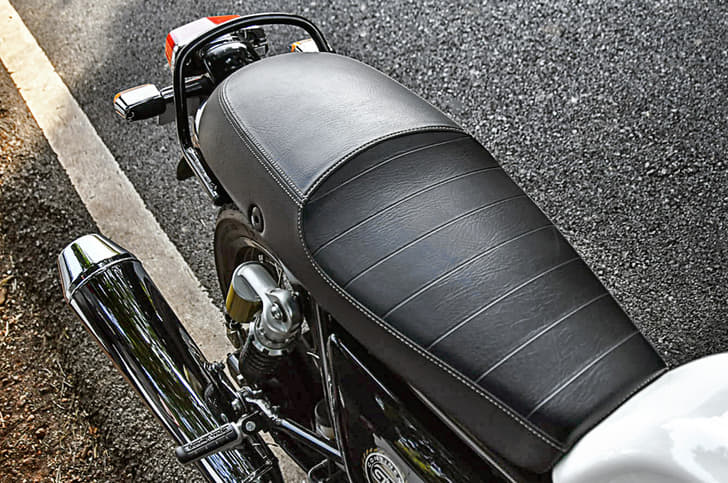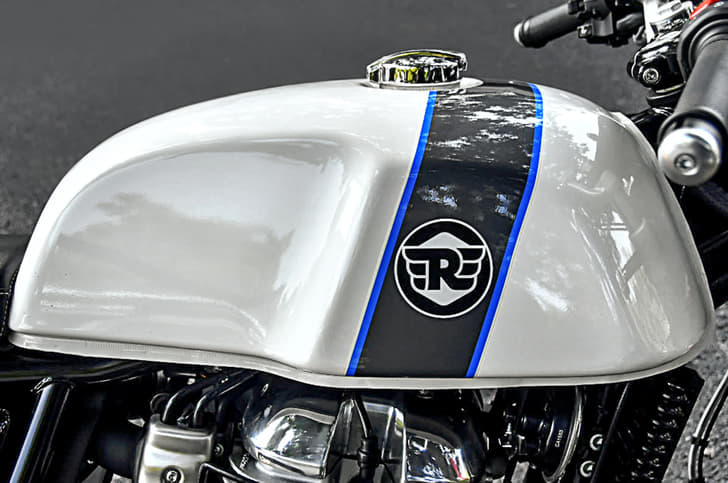Allow me to declare right at the onset that I’m as big a Bonneville fan as you can find and I think Triumph always had its retro-modern recipe bang-on with this family of motorcycles in its Modern Classics range. The Bonnie range, in recent years, has packaged simplicity, a measured degree of sophistication, and an overall grown-up character to near-perfection and the only real alternatives to it have been the unapologetically juvenile Ducati Scrambler, and perhaps the Harley-Davidson Street Rod, which is fun but not as universally appealing. However, to the unbiased, the base Street Twin didn’t quite make the cut and Triumph has been listening attentively. That explains the motorcycle you see right here, then.
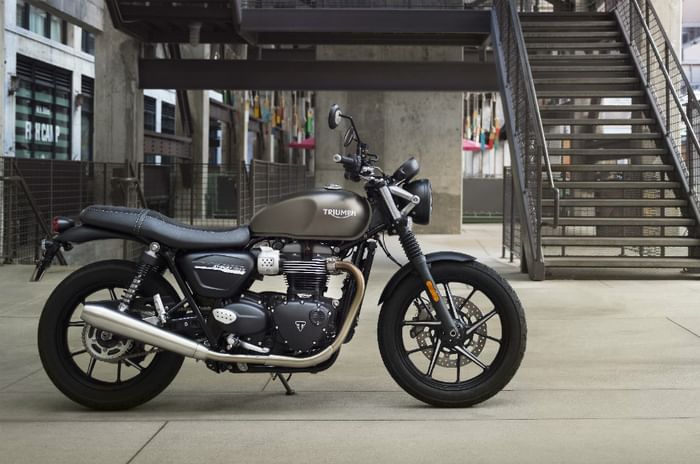
BUT IT LOOKS THE SAME...
You’re right, but changes are visible to the keener eye. The Street Twin has a good, faultless base design and it surely didn’t need a dramatic overhaul, which is why Triumph didn’t go down that route. The focus for 2019 has been the details. The wheels (an 18/17-inch front/rear combo) feature a machined design that’s snazzy, the engine is almost entirely blacked-out save for the fins and some very classy embellishments complete the treatment. The single-pod instrument cluster now gets a black surround with a small and tasteful ‘Bonneville’ metal plaque that sits atop it. Also new are the side panels, which are perhaps the biggest design update to the 2019 model, although from a distance, it won’t strike you as being brand new. The decal fonts are a bit cooler, too.
Step within touching distance of the new Street Twin and the really nice details begin to emerge. The headlight bracket is now a brushed aluminium unit and feels very premium, the mirrors appear to be of a higher quality as well, the nicely machined levers are now adjustable and, on the whole, the ‘Twin feels a little more expensive. Triumph will let you pick between three colours – Matter Ironstone, Korosi Red and Jet Black. Sure, you’ll hardly be able to tell a 2019 bike from its predecessor if it blurs past you, but to someone looking to own one, the details will serve as strong influencers.

IS IT STILL AS AUSTERE, THOUGH?
No, Triumph’s been eavesdropping on your bar talk. As a result, the Street Twin now gets a two riding modes – Road and Rain – selectable via a dedicated button on the LHS switchgear pod. This is in addition to disengagable traction control, ride-by-wire and ABS, all of which are already available on the outgoing model as well. It also gets an underseat USB charging socket (also present on the outgoing model) and, in a segment-first, optional heated grips. A tyre pressure monitoring system is available as an optional extra. Triumph is offering a list of over 140 accessories that are enhancements not only to the aesthetics, but also to the functionality and mechanicals.
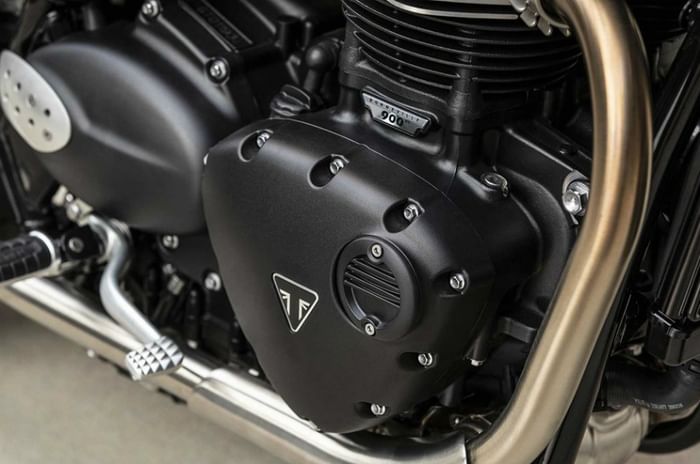
SO WHAT? IT’LL STILL BE A BIT BORING TO RIDE, NO?
Not quite. Alright, so the Street Twin did fall short in the enthusiasm department but it was never a slouch. That’s been bettered now, thanks to the power output that’s been jacked up by a neat 10hp, bringing the tally up to 65hp. If you were about to say ‘But the Interceptor 650...’, you weren’t wrong, but the Street Twin now has enough substance in every aspect to qualify as an upgrade to the fantastic new RE. The only apparent catch to this hike in power output is the substantially higher rpm this is achieved at – up from 5,900rpm to 7,500rpm – and we’ll get to that in a bit. Moving on, Triumph has equipped the 2019 ‘Twin with a new camshaft, as well as lightening up some parts, including a revised magnesium cam cover and an updated clutch cover. The ‘Twin is also equipped with what Triumph calls a torque-assist clutch, which makes lever action lighter and also offers a small amount of slip when downshifting. It’s not the same as a slipper clutch as we know it, however, and Triumph doesn’t call it one anyway.
Contrary to my initial apprehensions, the higher peak power rpm doesn’t come through as a disappointment. The motor is now simply crisper and more alive in the mid-range, and unlike on the older model, there’s now a fulfilling top-end in store as well. In the sweeping, generally fast roads around Lisbon, which allowed me to average decently high speeds, the Street Twin proved a lot of fun; an adjective used less liberally to describe the previous model. What I particularly like is how Triumph has injected stronger character into the motor while still keeping it sublime, so the kind of performance you are delivered solely depends on what you choose to do with your throttle hand. Perhaps the full impact of these revisions may not come through in a cramped city like Mumbai, but, to summarise, the Street Twin is now satisfyingly involving, and that’s a big step up.
If you’re a highway regular, you will enjoy the fruits of Triumph’s labour because the Street Twin has undoubtedly become more engaging towards the top-end. It’s more eager to be ridden hard, and is still as linear and refined as ever, which is a lovely balance. Peak torque remains unchanged – 80Nm – although this, too, is achieved at a higher rpm (3,800rpm, as opposed to the older bike’s 3,230rpm. Of significance, however, is the flatter torque curve, which does overall tractability huge favours. I do wish Triumph had taken this opportunity to finally add a sixth gear to the mix, but the developmental costs would have reflected in retail prices, something the brand wasn’t too keen on. On the move, I didn’t find myself looking for a sixth gear – fifth is comfortable enough (100kph comes up at 3,250rpm) although, on another note, I did find the gearshifts to be hard, even if not annoyingly so. Nevertheless, it’s only fair to expect a 6-speed gearbox on what is going to be a Rs 7 lakh+ motorcycle in India, so let’s take a point away from Triumph for this, okay?
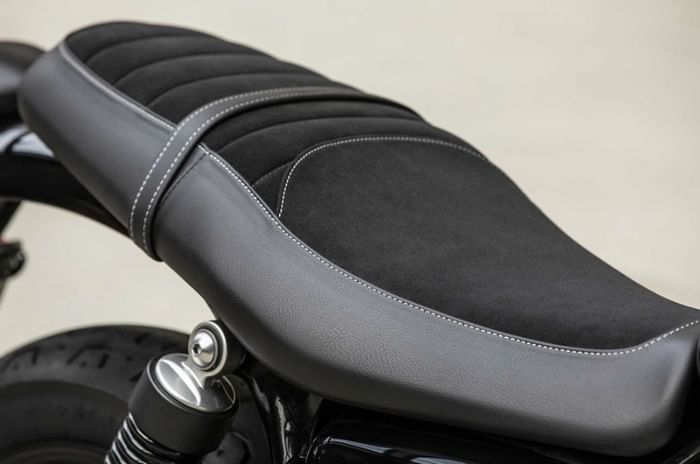
HAVE THE DYNAMICS IMPROVED, TOO?
Yes, they have. Feedback from existing Street Twin owners hinted at a demand for better front suspension and Triumph has acted upon it by employing a new version of the 41mm KYB telescopic fork. While Lisbon denied me a truly gruelling patch of road, the odd bumps gave away what Triumph has achieved in this aspect. Firstly, the fork offers noticeably better rebound damping and is no longer bouncy and, secondly, the ride has gotten firmer. While the Street Twin feels more dignified tackling undulations and is more confident around fast corners, the ride quality is less pliant now. A bump I didn’t spot nearly jolted me out of my seat and knowing the kind of surprises Indian roads can spring up, this will be an area of concern for regular users.
On another note, I did quiz Triumph on its insistence with retaining the 18/17-inch wheel combo (‘wouldn’t uniform 17s offer even better handling?’ being my query) but all I got was its perspective on the bike’s stance and proportions, something I’m not fully convinced about. It’s not that the 18-inch front wheel deprives you of fun – and it certainly has a positive impact on stability – but a 17-inch front wheel would surely make it more agile and let you pick from a wider range of replacement tyres when the time comes; 18-inch wheels aren’t even commonplace in commuter-dominated India anymore! The Pirelli Phantom Sportscomp tyres (100/90-18, 150/70-17), though, have been developed specifically for the Street Twin and I found them to be effortlessly grippy and easy to trust, despite the unfavourable riding conditions (read, cold and damp tarmac that mimicked ice). I must make a quick mention of the revised ergonomics, too, with a 10mm higher (and better finished) seat making it ever-so-slightly friendlier to tall riders. Overall, it offers a relaxed but pleasantly involving riding geometry. What remains unchanged is the 198kg dry weight and the 12-litre fuel tank capacity.
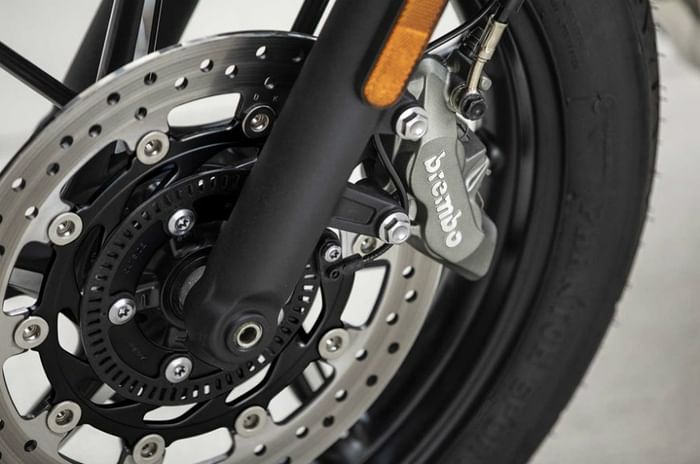
We must now move on to a very important update – the front brake, which features a Brembo 4-pot caliper (as opposed to the 2-pot unit on the older bike) and a 310mm disc. While the Street Twin’s brakes have never been bothersome, the new bike really excels in this area and this is certainly an update that will justify a price hike. Thanks to the more sophisticated-feeling suspension and superb tyres, even aggressive braking is dealt with in a mature, progressive and predictable manner with great bite and with no suspense awaiting you. I was rather encouraged by this new item on the list and despite my best attempts, I couldn’t get the brakes to disappoint. The 255mm rear disc, meanwhile, continues with the Nissin 2-pot setup.
OKAY, WHEN CAN I BUY ONE? AND SHOULD I?
The 2019 Street Twin goes on sale in Europe in February, which means India will get the bike by April, if Triumph India sticks to its typical good pace. While it will certainly be priced at a premium, the hike, if contained within Rs 30-50,000, will still keep the Street Twin at an accessible price point. The premium, to summarise, not only gets you improved quality, but also valuable updates to the brakes, electronics and, of course, the aforementioned 10hp extra. The firm suspension, though, will remain a concern.
As for the second question, the answer is a loud and clear ‘Yes!’. It’s not as invigorating as a Ducati Scrambler, but think of it is a dependable, well-equipped and to-the-point premium motorcycle and you, like me, could very well find yourself becoming a fan as well.





















